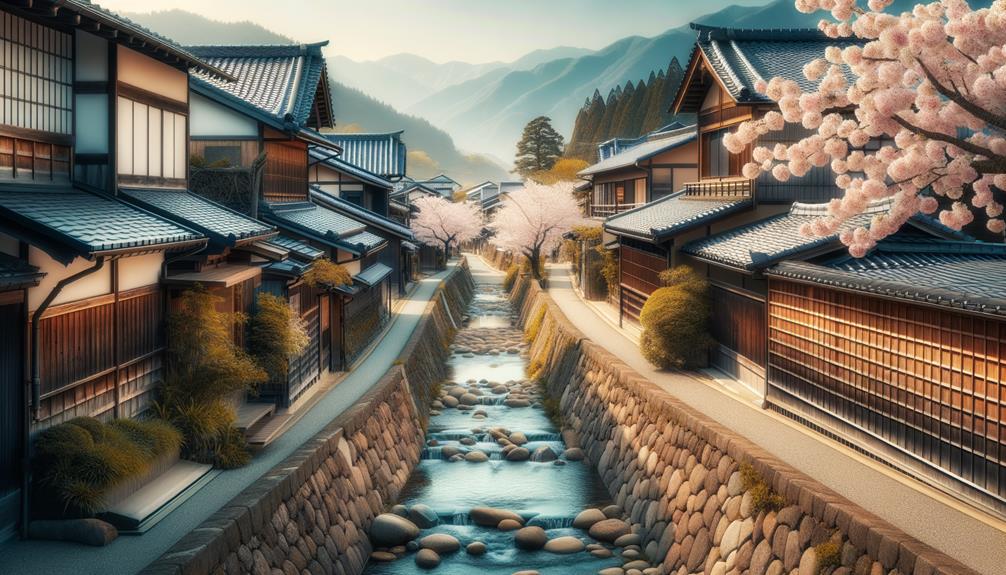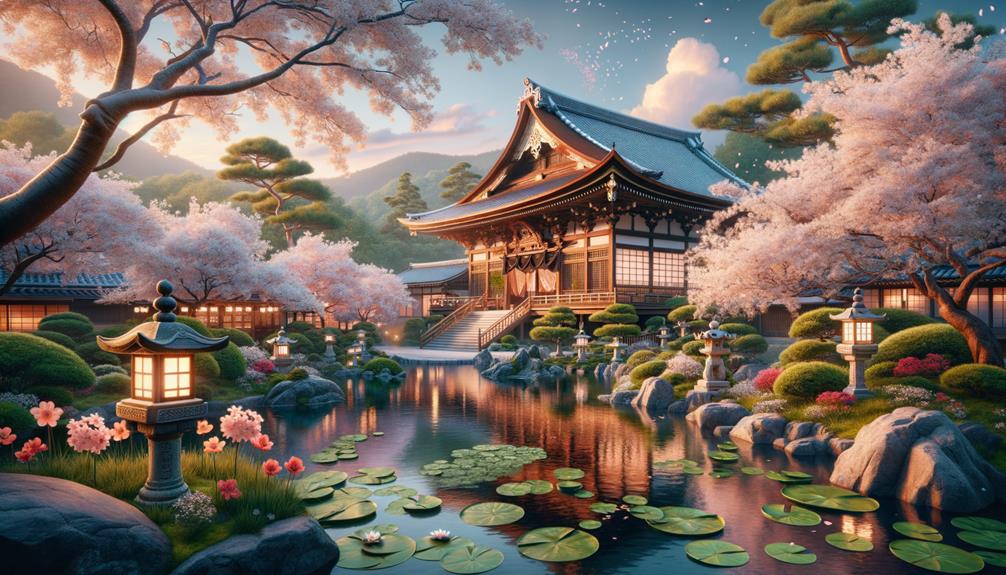As I strolled through the narrow, stone-paved streets of Nagamachi, the Kanazawa Samurai District, I felt transported back to the Edo period. The earthen walls, with their lattice windows and tiled roofs, seemed to whisper stories of the Maeda clan's disciplined yet refined way of life. At the Nomura Samurai House, the intricate craftsmanship of samurai artifacts quietly contrasted with the lush, peaceful gardens that invited reflection. With each step, I became more immersed in the rich tapestry of samurai culture, eager to uncover more layers of this historical enclave.
Getting to Nagamachi
Getting to Nagamachi
Nagamachi is a short 10-minute walk from the Ishikawa gate of Kanazawa Castle, making it easy to reach and rich in samurai history. I began my trip by hopping on the Kanazawa Loop Bus from Kanazawa Station. The ride took just 7 minutes and cost only 200 yen—a small price for a journey back in time. I got off at the Korinbo bus stop and enjoyed a relaxed 5-minute walk, with my excitement growing with each step.
As I neared Nagamachi, the district's traditional charm welcomed me. Narrow lanes twisted through the area, flanked by well-preserved earthen walls that seemed to whisper stories from the past. Each turn unveiled more of the samurai lifestyle that thrived during the Edo period. It felt like stepping into a living museum where history and the present meet seamlessly.
The Kanazawa Loop Bus made exploring this historical gem a breeze. The district's authenticity was clear, with well-preserved samurai homes offering a tangible link to the past. Walking through Nagamachi, I felt a deep sense of freedom, as if I were traveling the same paths where samurai once roamed, their spirit still alive in the air.
Historical Background
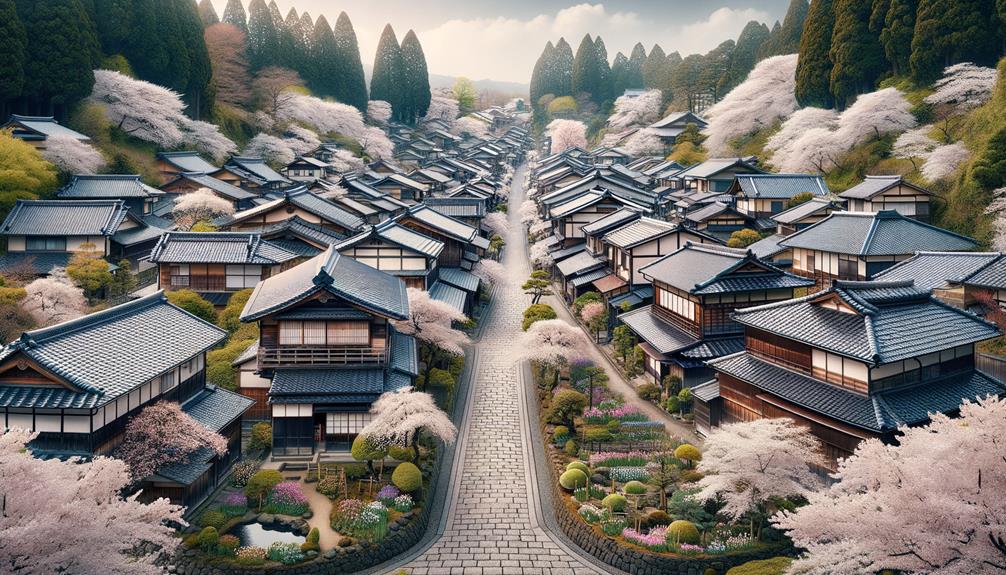
Walking through the narrow lanes of Nagamachi, I couldn't help but think about the rich history left behind by the samurai of the Maeda clan. Their legacy still echoes through the well-preserved homes and streets. The Maeda clan was a powerful and influential family during the Edo period, and their presence in Nagamachi is both tangible and impressive.
The Edo period, from 1603 to 1868, was a time when samurai culture thrived. In Nagamachi, the samurai's lifestyle is evident in the earthen walls, narrow lanes, and picturesque canals that define the area. The architecture of their homes, with carefully crafted wood and stone, showcases the attention to detail and aesthetics of that era.
As I strolled through these streets, it felt like stepping back in time. The district's calm atmosphere contrasts with the intense loyalty and honor that defined the lives of its former residents. These samurai were more than just warriors; they were also scholars, artists, and statesmen who played significant roles in the cultural and political landscape of the Edo period.
Nomura Samurai House
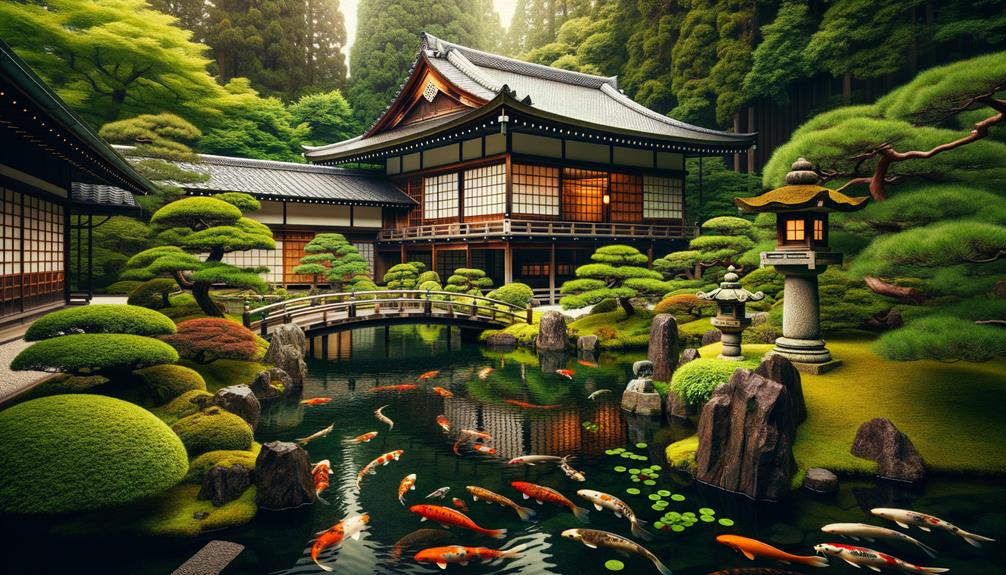
Walking into the Nomura Samurai House feels like stepping back in time to the Edo period. The beautifully designed inner garden, with its koi pond and meticulously pruned trees, immediately draws you in. Inside, the family heirlooms and historical artifacts offer a captivating look into the life of a samurai family.
Historical Samurai Artifacts
Inside the Nomura Samurai House, you can dive into the rich history of a samurai family by exploring their impressive collection of artifacts. Located in the heart of the Nagamachi Samurai District, this carefully restored residence offers a rare look into the lives of these noble warriors. Wandering through the house, I was captivated by the exquisite samurai armor displayed prominently in the main hall. Each piece, meticulously crafted, tells stories of honor and bravery from a bygone era.
The collection also includes beautifully preserved family heirlooms that showcase the artistry and craftsmanship of the Edo period. Delicate tea utensils, intricate calligraphy scrolls, and finely made weapons highlight the refined lifestyle of the samurai. These artifacts are more than just relics; they are vibrant links to Japan's rich cultural heritage.
Here's a quick guide to some of the treasures you'll find in the Nomura Samurai House:
| Artifact Type | Description | Era |
|---|---|---|
| Samurai Armor | Intricately designed armor | Edo Period |
| Tea Utensils | Delicate and ornate | Edo Period |
| Calligraphy Scrolls | Beautifully written texts | Edo Period |
| Weapons | Swords and spears | Edo Period |
Walking through this historical collection, I felt a deep connection to the samurai spirit—a timeless tribute to discipline, honor, and cultural richness.
Meticulously Landscaped Garden
Tucked away in the Nomura Samurai House, the beautifully landscaped garden offers a peaceful escape that captures the elegance of the Edo period. Stepping into this garden, the noise of modern life fades, replaced by a calm atmosphere that whispers stories from the past.
The garden's traditional Japanese design reflects the refined tastes of the samurai. Every element is thoughtfully placed, creating a harmonious balance that feels almost magical. Some standout features include:
- Koi Pond: Colorful koi fish glide through the clear waters, symbolizing long life and perseverance.
- Stone Lanterns: These intricately carved lanterns add timeless beauty, casting soft glows that enhance the garden's mystique.
- Stepping Stones: The carefully placed stones invite visitors to walk mindfully, turning each step into a thoughtful journey.
- Meticulous Pruning: Each plant and tree is expertly trimmed, showcasing the artistry and precision typical of traditional Japanese gardens.
Exploring this garden feels like stepping into a living painting. The Nomura Samurai House's inner garden doesn't just display historical charm; it immerses you in a peaceful retreat that reflects the lifestyle of Edo period samurai.
Edo Period Architecture
Strolling through the Nomura Samurai House, I can't help but be impressed by the detailed Edo period design that showcases the elegance and skilled work of the past. Each room has its own character, with tatami mats underfoot and sliding shoji screens letting in a gentle light. The polished wooden beams hint at a time when craftsmanship was key.
Standing in this samurai house, I really get a sense of the samurai way of life. The peaceful inner garden, accessible from multiple rooms, offers a quiet retreat, starkly different from the busy streets outside. It's easy to picture a samurai finding calm here after a long day.
Interestingly, the house also shows the influence of the merchant class. The beautifully crafted interiors and fine artifacts suggest the Nomura family's wealth and status. This mix of samurai and merchant styles highlights the unique social and economic fabric of the Edo period.
As I walk through, the house feels like a time capsule, with every corner telling stories of honor and tradition. The Nomura Samurai House isn't just a look into the past; it's a walk through history.
Kanazawa Shinise Kinenkan
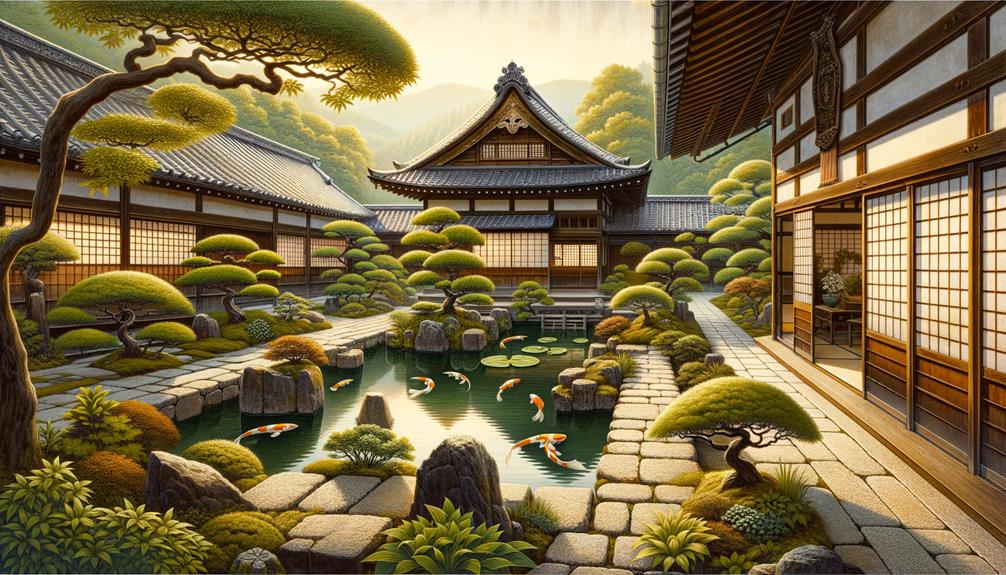
Kanazawa Shinise Kinenkan, set in a wonderfully preserved wooden townhouse, offers a captivating look into the life of Kanazawa's merchant class. Stepping into the museum, I felt like I was traveling back to a time when merchants and samurai coexisted. The contrast between the house's samurai origins and its current focus on merchant life is truly intriguing.
Inside, the exhibits are carefully curated to depict the everyday life and trade of the Edo period. One highlight is the reconstructed old-style pharmacy, showcasing where traditional medicines were once sold. The serene tea rooms invite visitors to imagine the conversations that took place there.
- Reconstructed old-style pharmacy
- Serene tea rooms
- Historical wooden architecture
- Free entrance for young visitors
Each room's attention to detail is impressive, making it easy to appreciate the cultural and historical importance of the site. The museum is open from 9:30 AM to 5:00 PM, with the last entry at 4:30 PM, perfect for a relaxed visit. And knowing that the entrance is free for Senior High School Students and younger visitors makes it even more appealing. Walking through Kanazawa Shinise Kinenkan, I felt a strong connection to the past, a reminder of the rich history that shapes Kanazawa's heritage.
Ashigaru Shiryokan
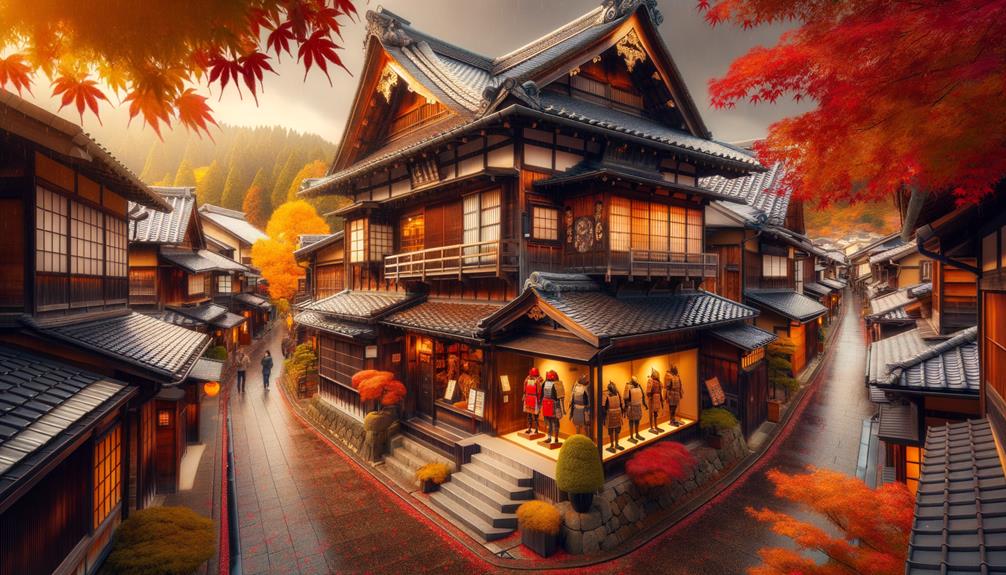
In the historic district of Nagamachi, Ashigaru Shiryokan offers an intriguing look into the everyday lives of Kanazawa's foot soldiers. Unlike the grand homes of the high-ranking samurai, this former ashigaru settlement features two well-preserved houses of the Takanishi and Shimizu families.
Walking through these homes, I was struck by their simple and functional design. Wooden floors, tatami mats, and modest furnishings paint a picture of a life dedicated to duty and service. It's a sharp contrast to the luxurious samurai estates in the area, highlighting the diverse social fabric of Kanazawa's past.
Open from 9:30-17:00 with free entry, Ashigaru Shiryokan invites visitors to step into the daily lives of these foot soldiers. The museum's quiet charm offers an intimate look at how these warriors and their families lived, worked, and supported the samurai class. It serves as a gentle reminder that every society relies on the contributions of both the powerful and the humble. As I left, I felt a deep appreciation for the rich cultural tapestry that defines Kanazawa.
Kyu-Kaga Hanshi Takada House
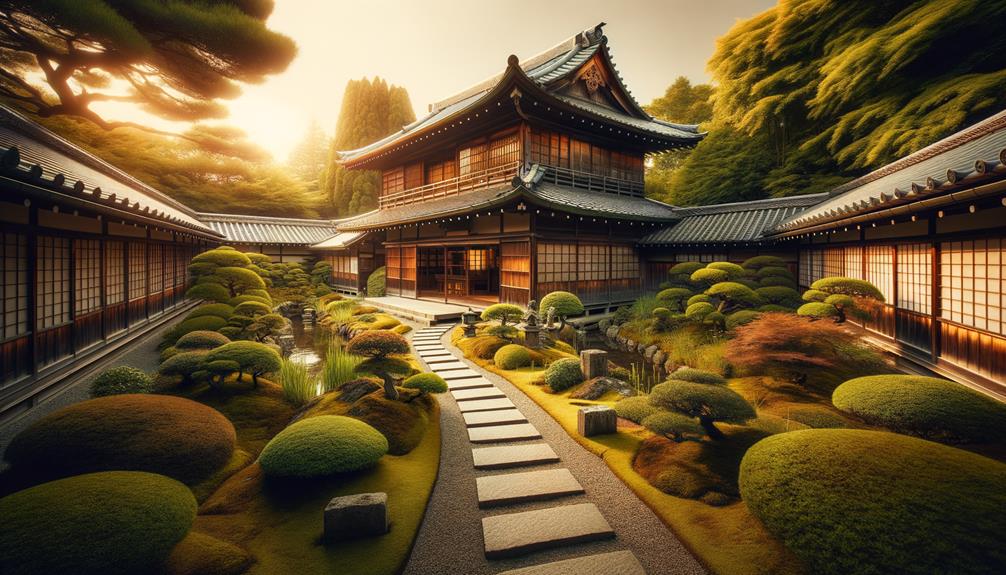
As I wandered through the Nagamachi Samurai District, I found myself at the Kyu-Kaga Hanshi Takada House. This beautiful example of traditional samurai architecture features a serene garden and a lovely pond. The restored row-house offers a genuine look into the opulence and simplicity of samurai life.
Stepping through the gates, I was immediately taken by the elegance of the garden. The thoughtful arrangement of stones and plants created a calm atmosphere, while the pond mirrored the sky, adding a touch of tranquility. As I walked through the house, I couldn't help but admire the detailed restoration work, which preserved:
- Intricate wooden interiors that radiate warmth and history.
- Sliding paper doors (shoji) that subtly divide the spaces while keeping an open feel.
- Tatami mat flooring that adds both comfort and tradition to the living areas.
- A distinctive gate that sets a welcoming tone for visitors.
Open daily from 9:30 AM to 5:00 PM with free entrance, the house felt like a step back in time. Located in the heart of Kanazawa's historical district, it's a must-see for anyone wanting to understand the rich heritage of the samurai district.
Nagamachi Yuzenkan

In the heart of the historic Nagamachi district, Nagamachi Yuzenkan invites visitors to experience the intricate art of Kaga Yuzen silk painting. As I walked into this former samurai house, I was immediately struck by the calm and historical atmosphere. This workshop highlights the traditional kimono coloring techniques that define the region's artistic heritage.
Watching the artists at work was truly fascinating. With careful hands, they brought silk fabric to life, creating designs rich in color and detail. The precision and patience required for Kaga Yuzen are impressive, with each brushstroke blending tradition and creativity. For those interested in trying this art form, the workshop offers hands-on experiences, allowing visitors to practice these ancient techniques.
Though it's closed on Tuesdays, Wednesdays, and during the winter months, Nagamachi Yuzenkan remains a valuable cultural site. Before leaving, I picked up some beautifully dyed silk souvenirs, each one a vivid reminder of the samurai district's rich artistic history.
Local Accommodation Options

While soaking up Kanazawa's rich history and culture, I found a variety of accommodations that mix traditional Japanese hospitality with contemporary amenities. Each place offers a unique experience, letting visitors dive into the city's samurai heritage while enjoying nearby shops and restaurants.
One remarkable option is Ryotei Manyo, an authentic ryokan known for its stunning garden and traditional feel. Walking through its peaceful paths, I felt like I had stepped back in time.
For food lovers, Matsusaki serves exceptional kaiseki cuisine. These multi-course meals are more than just food—they're a piece of art, carefully crafted to reflect the changing seasons.
If you're looking for luxury with a touch of cultural immersion, Hotel Resol Trinity Kanazawa is a perfect choice. This hotel elegantly blends Kanazawa's art and culture into its design, creating a harmonious mix of tradition and modernity.
For a comfortable yet upscale stay, HOTEL 101 KANAZAWA offers modern amenities along with the charm of a garden and an on-site restaurant, making it easy to relax after a day of exploring.
- Ryotei Manyo
- Matsusaki
- Hotel Resol Trinity Kanazawa
- HOTEL 101 KANAZAWA
Whether you're on a budget or seeking luxury, Kanazawa has accommodation to suit everyone, ensuring a memorable stay in this historic city.
Frequently Asked Questions
How Long Does It Take to See Kanazawa?
Seeing Kanazawa can easily take up most of your day. I spent about 6-8 hours soaking in its rich culture and history, with some extra time for unexpected finds and little hidden gems.
What Is Special About Kanazawa?
Kanazawa's allure lies in its rich history and vibrant culture. I was captivated by the well-preserved samurai district, wandered through its charming streets, and delved into the world of traditional Japanese crafts. It was a firsthand experience of Japan's timeless beauty.

